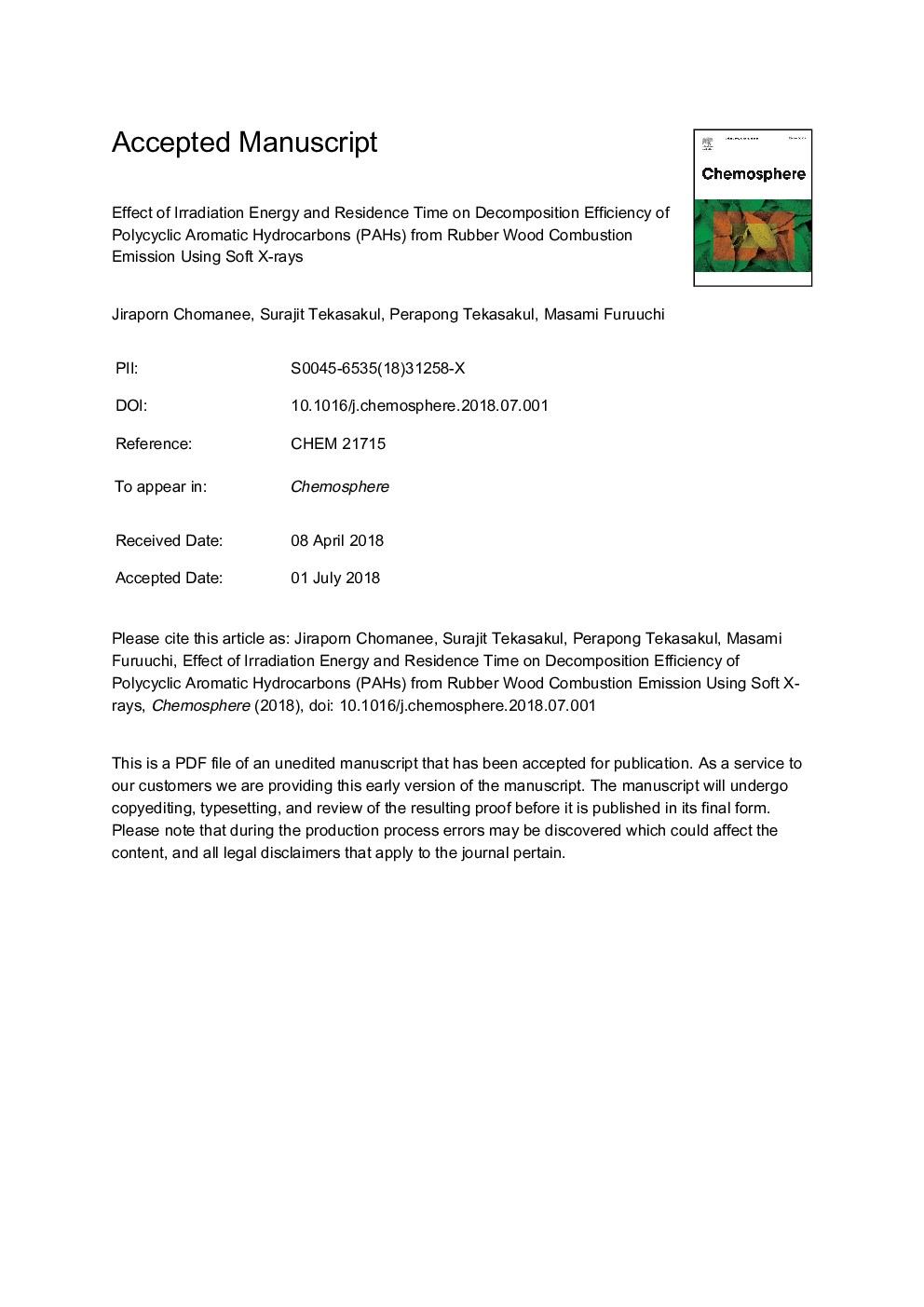| Article ID | Journal | Published Year | Pages | File Type |
|---|---|---|---|---|
| 8850498 | Chemosphere | 2018 | 30 Pages |
Abstract
This research aims to investigate the effects of irradiation energy and residence time of soft X-ray irradiation in the decomposition of sixteen polycyclic aromatic hydrocarbons (PAHs) in smoke particles emitted from the Para rubber wood burning. The burning process was carried out in a tube furnace and the soft X-ray radiation used had a wave length of 0.13-0.41â¯nm. The irradiated (IR) and non irradiated (N-IR) smoke particles were collected simultaneously using a 10-stage Andersen sampler equipped with an inertial-filter stage (ANIF), in order to determine the physicochemical characteristic of both IR and N-IR smoke particles, including particle size distribution and concentration, and particle-bound PAHs concentration. Results show that the nano-size smoke particles contained the highest amount of PAHs and of carcinogenic potency equivalent (BaP-TEQ). About 75% of PAH compounds on the total smoke particles were decomposed at the highest irradiation energy. Moreover, 4-6 ring PAHs in nanoparticles (<70â¯nm) were decomposed of up to about 91% at the highest irradiation energy. The decomposition efficiency of PAHs was influenced by particle size, PAHs boiling temperature and irradiation energy. It was higher for PAHs with lower boiling temperature and smaller size particles, while the effect of residence time was not significant.
Related Topics
Life Sciences
Environmental Science
Environmental Chemistry
Authors
Jiraporn Chomanee, Surajit Tekasakul, Perapong Tekasakul, Masami Furuuchi,
